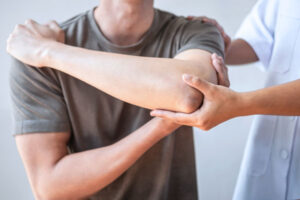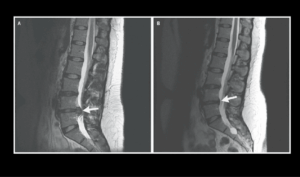The Importance of Postural Health
Optimal posture is essential not only for physical comfort but also for preventing musculoskeletal disorders and enhancing overall well-being. Poor posture often leads to chronic pain in the neck, shoulders, and lower back, impaired mobility, and decreased functional capacity. Moreover, postural imbalances can adversely affect respiratory mechanics, resulting in inefficient breathing patterns that exacerbate tension and fatigue.
Comprehensive Assessment and Individualized Treatment
My clinical approach involves a detailed assessment of your postural alignment, muscular imbalances, joint mobility, and neurological control mechanisms. By evaluating how your body functions as an integrated system, I identify the underlying causes of postural dysfunction rather than merely addressing symptoms. This allows for the creation of a personalized rehabilitation plan tailored to your specific needs.
Integrated Therapeutic Techniques
Treatment combines advanced manual therapy techniques with targeted corrective exercises and neurological interventions such as Proprioceptive Deep Tendon Reflex (P-DTR). Manual therapy facilitates soft tissue release and joint mobilization, improving structural alignment and reducing pain. P-DTR therapy focuses on resetting dysfunctional neuromuscular reflexes, thereby optimizing muscle tone and coordination to support sustained postural improvements.
Breathing Rehabilitation for Optimal Function
Breathing and posture are intrinsically linked. Dysfunctional breathing patterns can compromise core stability, increase muscular tension, and diminish oxygen delivery to tissues. Utilizing evidence-based breathing retraining and neurophysiological methods, I work with you to restore efficient respiratory mechanics. Improved breathing not only enhances physical performance but also contributes to stress reduction and cognitive clarity.
Benefits of Combined Postural and Breathing Therapy
This integrative approach offers multiple benefits including:
- Significant reduction of chronic musculoskeletal pain
- Enhanced spinal and joint alignment
- Improved muscular balance and neuromuscular control
- Greater core stability and postural endurance
- Increased respiratory efficiency and overall vitality
- Effective management of stress-related symptoms
Ideal for sedentary professionals, athletes, and anyone seeking lasting relief from posture-related dysfunctions.
Common Types of Posture
1. Neutral Posture
This is the ideal posture where the body is aligned naturally and symmetrically. In neutral posture, the ears are aligned over the shoulders, the shoulders over the hips, and the hips over the knees and ankles. The spine maintains its natural curves — cervical lordosis (neck curve), thoracic kyphosis (upper back curve), and lumbar lordosis (lower back curve). This alignment distributes body weight evenly, minimizing stress on muscles, joints, and ligaments.
2. Kyphotic Posture (Rounded Upper Back)
Characterized by an exaggerated forward curve of the upper back (thoracic kyphosis), this posture often results from prolonged sitting, slouching, or hunching over screens. It causes rounded shoulders, a forward head, and can lead to neck and upper back pain, decreased lung capacity, and tension headaches.
3. Lordotic Posture (Excessive Lower Back Arch)
This posture features an exaggerated inward curve of the lower back (lumbar lordosis), often caused by weak abdominal muscles, tight lower back muscles, or habitual postures like high-heeled shoes. It can result in lower back pain, muscle fatigue, and strain on spinal discs.
4. Flat Back Posture
Here, the normal lumbar curve is reduced or flattened, often due to muscle weakness or spinal conditions. This posture can cause stiffness, decreased shock absorption during movement, and lower back discomfort.
5. Swayback Posture
This posture involves hips pushed forward and the upper body leaning backward, leading to imbalance. It often occurs due to muscle imbalances and poor habits and can cause discomfort in the lower back and hips.
What is the Ideal Posture?
The ideal posture is the neutral posture because it:
- Ensures balanced muscle activation and reduces unnecessary strain.
- Maintains the natural curves of the spine to absorb shocks efficiently.
- Supports optimal joint alignment and mobility.
- Facilitates proper breathing mechanics and organ function.
- Reduces the risk of developing musculoskeletal pain or injury.
Why Good Posture is Important
Good posture not only prevents pain and injury but also enhances confidence, energy levels, and overall physical performance. It supports healthy breathing and circulation, and improves your ability to focus and maintain stamina throughout the day.
How to Achieve and Maintain Ideal Posture
- Be mindful of your posture during daily activities, especially when sitting or using electronic devices.
- Engage in exercises that strengthen core and postural muscles.
- Stretch tight muscles that pull you out of alignment.
- Consider professional evaluation and treatment if you experience pain or persistent postural issues.
Why Choose My Services?
With over 8 years of clinical expertise, a Master’s degree in Sports Physiotherapy, and specialized training in neurological rehabilitation and breathing techniques, I provide a holistic, evidence-based approach. My goal is to empower you through treatments that address both biomechanical and neurological dimensions, facilitating optimal health and functional capacity.
Schedule Your Personalized Evaluation Today
Take the first step toward improved posture, breathing, and overall wellness. Contact me to book your comprehensive postural and breathing assessment in Dubai.











